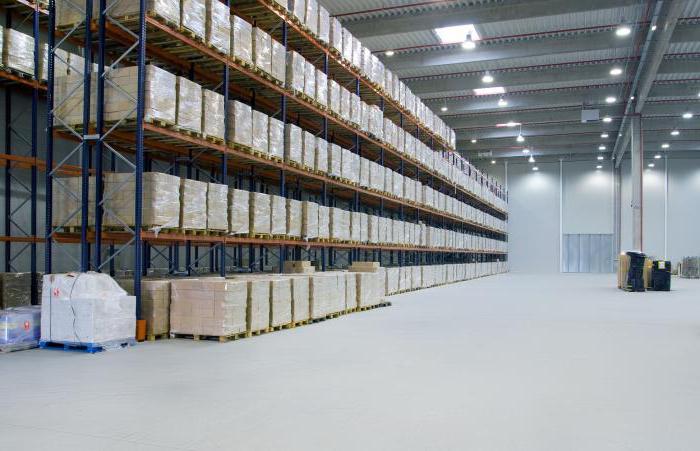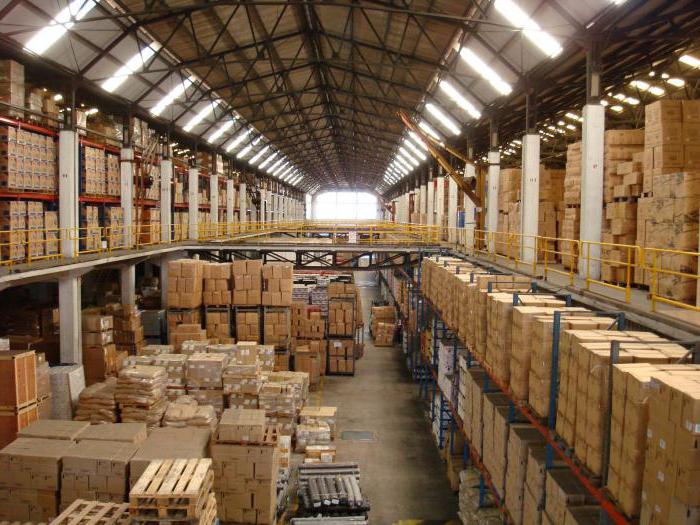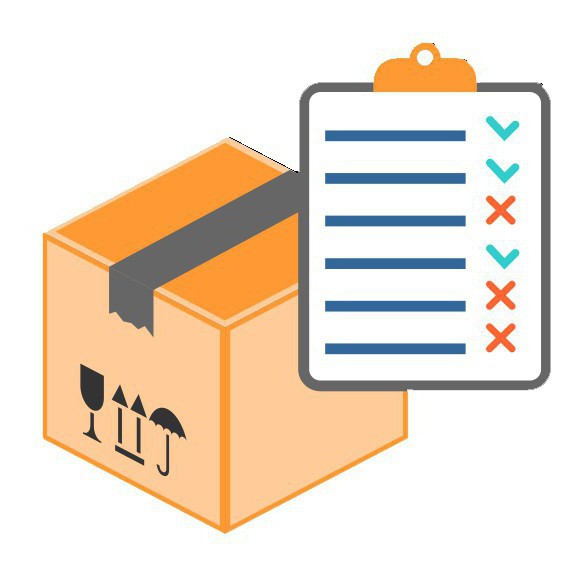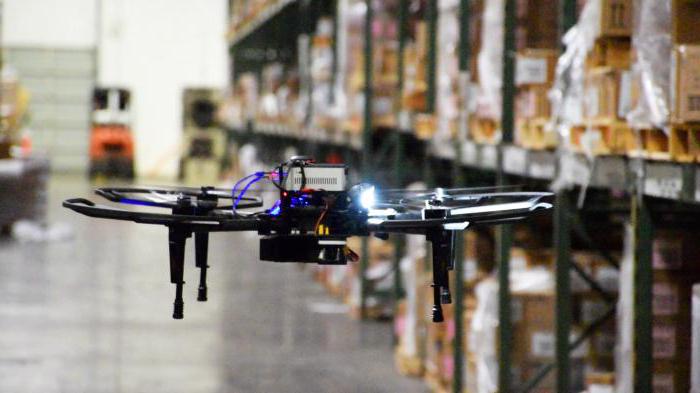Accounting and improving warehouse operations is the key to the quality work of any modern enterprise. Exactly how the work of the warehouse is adjusted determines how rationally the company works, how efficiently the production resources are used. Debugging, improvement of the system, automated accounting of warehouse operations allow achieving better profitability and productivity, and the finished product becomes better.

Why do we need a warehouse?
The main purpose of the warehouse in any company is the storage of production inventories - MPZ. Warehouse - a platform for various works: here the materials are prepared for use as part of the production process, are sent to consumers. The modern, efficient organization and technology of warehouse operations using the latest methodologies, software allows to minimize material losses both during storage and when used in work. This, in turn, affects the cost of goods. But the careless registration of warehouse operations creates conditions in which theft cannot be avoided. The head of the company, no matter how confident he is in each of the employees, must be aware that there is always the possibility of unfair employee behavior provoked by both his personal qualities and external pressure.

An integral part of the warehouse system is the warehouse operations specialist. Depends on his qualifications, attentiveness, education, whether the warehouse will be “as accurate as a clock”, or whether problems will be regularly pursued. When selecting staff for a warehouse, it’s not enough to make sure that the candidate owns 1C: Warehouse. You need to find out how well he understands logistics and whether he understands the logic of organizing storage zones.
Subspecies of Warehouses
Depending on the destination, there are several groups of warehouses. Classical classification system:
- material;
- internal production.
The second group is divided into warehouses:
- between workshops;
- inside the workshops.
Material, as the name implies, is needed to store the material reserves of the enterprise. Here is everything that the company needs for a workflow without interruptions. They adjust the work of the material warehouse, conduct basic warehouse operations in such a way that the production process is always provided with materials with a margin. The clarity of warehouse logistics determines the success of the company, production lines, the ability of the enterprise to cope with orders, and the heads of departments - with tasks.

Intra-production - these are the types of warehouses that exist inside the shops and between them, which are necessary for the MPZ. It also contains inter-operational reserves necessary for jobs to be serviced clearly and in a timely manner. Keeping records of warehouse operations occurs when adjusting for shift introduced in production. That is, each new schedule, each successive shift of workers must have all the raw materials necessary for normal functioning.
What else are there?
In addition, warehouse accounting allows you to allocate universal and specialized places for storage of MPZ.
Universal design so that you can easily store a variety of values for a long time coming to the company. This is usually how central warehouses are organized. The reserves stored here are intended for management and production.
Specialized ones are those where only specific varieties of values reside. It can be metal or paints, varnishes or wood, electrical products, frozen foods and so on.
Equipment and accounting
Effective accounting of warehouse operations is possible only when the values to be recorded are stored in a logical, systematic system. This means that there must be a clearly designed space, and warehouse operators have and are able to use scales and other measuring instruments. They assess on-site the quality parameters of the incoming goods and monitor its safety, measure the volume of the issued items and identify inconsistencies, if any, and also determine the cause of what happened.
The volumes of materials received are taken into account based on the unit of account adopted by the company. To control the position, measure, weigh, consider how many pieces arrived. In some cases, the so-called theoretical calculation is used.
Accounting: why is this necessary?
What is the 1C: Warehouse program for? Why do we need to keep records of inventories at the disposal of the enterprise? This question may arise among managers who unconditionally believe in the honesty of their employees. Nevertheless, no matter how managers were confident in the staff, accounting is an obligatory part of any warehouse, there is no escape from this.

Accounting for warehouse operations is aimed at ensuring the safety of the values received at the enterprise. The data accumulated in the accounting system make it possible to determine whether the company has slow-moving positions or whether there is redundancy of materials. From the work of the accounting system it is clear how great the turnover is, not only in general, but also regarding a specific type of material. Finally, at any moment, the database answers the question: “How many items are left in the warehouse?”
Warehouse: we accept positions
One of the most important operations in the warehouse is the acceptance of goods. An automated program for stock accounting is usually set up for quantitative accounting, but in addition to it, quality should also be carried out.
The operator responsible for taking positions checks the number of received positions and controls the quality of each of them. In this case, you first need to clarify the compliance in terms of volume, only then in terms of quality. In some warehouses, acceptance falls on the storekeeper, the person responsible for the warehouse, the manager, and for some, the responsibility is shared between the manager and the technical staff.
If materials belonging to special categories are accepted into the warehouse - the so-called responsible appointment, a commission is appointed for acceptance. The procedure for accepting valuable positions is similar. The program for stock accounting must contain the full nomenclature in the database in accordance with the order approved at the event. The same order introduces the selection committee, appointing the composition by name. In some companies, the responsibility for issuing an order rests with the chief engineer.
Warehouse accounting: how does it work?
So, the materials at the warehouse are accepted, invoices are checked, positions are recounted, the quality of each of them has been studied: palpated, smelled, tasted. What's next? And then the real magic of inventory control begins - the one that does not allow the values that appear in the company to scatter around the corners, as rats like to do.

One of the main assistants to the warehouse manager, and through him - the head of the company - these are documents of warehouse operations. They reflect what materials have arrived at the warehouse, which ones have gone, what has been used up and to whom it has been written off. Such accounting should be operational, reflect the current state of affairs, take into account all responsible employees and how they conduct business. Assign values to inventory numbers, then enter into accounting cards, indicating the number of positions that appeared in the company, their consumption.
Card as the basis of all things
The card is used to store all information related to the value to which it is assigned. Filling out the cards is entrusted to the materially responsible person with whom they preliminary conclude a liability agreement. A special registry is opened for cards, from which a specific one is issued strictly against receipt.
Warehouse accounting may be kept without registers, but with the help of books drawn up in the prescribed manner. However, in practice, almost all modern companies have switched to automated accounting. In this case, the card is maintained in electronic form, and only users who have accounts in the system have access. The program saves information about who made those or other changes to the card, which serves as an analogue to the list in the register when receiving a paper copy of the accounting document.
No reporting - nowhere
Accounting for warehouse operations involves daily monitoring of inventory balances held by the enterprise. Each month, the person responsible for the warehouse, analyzing the initial documentation, prepares a report for the head of the enterprise. The report is sent to the accounting department, backing it up with documentation reflecting the receipt, loss of values.
The report should reflect such materials, products, quantities, the composition of which changed during the reporting period. At the beginning of each month, a separate report is prepared, indicating in it how large the balances are for various positions at the disposal of the enterprise. The primary documentation of the company serves as the basis for fixing the arrival of values, departure. On the basis of these data prepare a code and balances reflecting the state of the company at the end of the month. The information indicated in the statements must be similar to that which is present in the warehouse accounting system and in the position cards.

Special cases
In some cases, accounting of warehouse operations is carried out by general categories. For example, if a company has a production line that allows repairing machines, then accounting for all small spare parts can be considered impractical. In this case, you can enter a general category - for example, “spare parts for milling machines”. This helps make data processing less labor and time consuming. Accounting is carried out in total terms, individual names of values do not appear in it.
Some companies have medicines in stock. In this case, the accounting of warehouse operations is set up in such a way as to always know the total quantity, but not to list specific items. Special cards should be wound up only on those medicines that contain alcohol or toxic substances. Reporting on medicines is assigned to doctors, veterinarians of the enterprise. They personally make lists, which are then sent to accountants.
Warehousing and logistics
Different warehouses perform different operations: this is determined by the specifics of a particular organization. Accordingly, this determines the types of warehouse operations required by the company. The largest number of warehouses in our country now is retail, wholesale, service companies. Considering the work of wholesale companies, we can distinguish the following warehouse operations:
- unloading cars with goods;
- acceptance of the brought;
- moving items within the warehouse;
- placement of goods in the sections reserved for this;
- selection of values;
- staffing;
- loading.
In general, this can be described by the term “logistics”. In our case, logistics describes the loading and unloading of valuables.
And how do we work?
The characteristic of warehouse operations of loading and unloading depends on what kind of cargo you need to work with, what kind of transport to serve. A strong influence on the work is provided by the level of mechanization of the simplest processes.Acceptance of goods by quality is one of the most important moments of the whole complex related to the receipt of positions at the warehouse.
How exactly to control the flows of material assets is decided by analyzing information on the quantity and quality of positions in the warehouse. Practice shows that often in accounting systems the data is incorrect, incomplete, which leads to managerial errors and losses for the company. Technological operations that occur during the logistics of goods are associated with unplanned changes in quantity and quality. Cargoes can be stolen, damaged, lost, there is the concept of "excess decline." The staff may make a mistake, form batches incorrectly, ship goods incorrectly. All this leads to shortages, re-grading, excess volume.

When accepting the goods, it is very important to carefully evaluate the applicant, regularly comparing the values with the declared list. Therefore, for any position accompanying documents should be issued, as a rule, invoices. Documenting each step is the most effective method of obtaining accurate stock position data.
Data must be up to date!
However, it is important not only to correctly record all the positions received by the company. It is necessary to introduce a system of accounting for warehouse operations, which will keep the database up-to-date at any time. And here the most modern technological solutions come to the rescue. This is specialized software designed specifically for warehouses. A typical example is a 1C company product, the so-called “Warehouse". The use of such software can minimize errors associated with loss of information, as well as reduce the human factor.
In order for the data to be as accurate as possible and reflect the actual situation in the warehouse at any time, you need to introduce a system for controlling the movement of values that reflects any movements. All steps - from the source to the consumer - must find their place in the internal documentation of the company. Only such total control can provide a high level of reliability of the data used for management decisions.
We store and take away
Goods taken from the supplier in the warehouse are placed in an area intended for regular storage. If the goods arrived in containers or are piece goods, they can be stacked. A convenient option is the installation of shelving. However, values cannot forever lie there, so sooner or later the time comes for the next warehouse operation - selection of the stored position. This can be done either as part of a package, or as a whole.
It is recommended to mechanize the operation if possible, but this is not always possible, and not every enterprise has sufficient funds to purchase the necessary machines. Selection is distinguished using techniques of small-scale mechanization and fully mechanized.

Warehouses are mechanized to varying degrees, on the basis of this distinguish: statistical, high-altitude dynamic. In the first case, there are racks along which the employee who selects the cells moves. As a rule, he works as a forklift: captures the desired cargo package, takes it out, moves it to a moving platform and delivers it to the picker. If you do not need the whole package, then the necessary amount of position is taken, and the rest is returned to the rack.
But dynamic high-altitude ones are those where automatic lifts work. They direct cargo packages to the picker and return them to the cells. The mechanisms are equipped with forks to help pick up the desired item. If the selector needs only part of the contents of the cargo package, the remainder is sent to the storage cell.
We come to a logical conclusion
Warehouse operations associated with the logistics of the goods, the direction of the values to the buyer are being completed. This takes place at a site intended for loading positions.In order for the warehouse to work smoothly, it is important to control two points:
- convenience and efficient use of space;
- documentation of each work step.
Documentation, as mentioned earlier, is most effective using electronic databases. If the company is small, it’s not even necessary to install special software, you can develop a simple base for recording the movement of goods yourself.
But as for the effectiveness of the use of the areas at the company's disposal, they are guided by the requirements:
- every square centimeter should be beneficial;
- the aisles should be wide;
- central walkways needed;
- sites for acceptance are organized where the goods arrive;
- shipping areas are equipped where the items are sent from;
- jobs should be safe;
- cargo flows must be distributed so that there are no oncoming movements.
Inventory
Perhaps the inventory is such an operation in the warehouse, which is most worrying for both linear staff and managers. It is quite complex, as it involves a large amount of work, and often also provokes conflict situations. You can avoid them if you manage to set up the workflow flawlessly. However, in the realities of modern business it is very difficult.

Inventory involves the study of free residues, their assessment, identification of location. There are several main stages of the event. You can minimize the likelihood of an error if, by the beginning of the inventory, you completely get rid of company reserves.
The inventory has the following sequence:
- form an empty reserve;
- Create a planned empty purchase
- add to the reserve all positions available in the free balance;
- unaccounted values are included in the planned purchase;
- goods in free reserve are considered to be missing and included in a special list.
The result of this sequence gives:
- free empty balance;
- positive reserve, including all matching positions;
- lists of missing values;
- Planned procurement, including everything that turned out to be out of account.
As a result of the inventory, missing values are usually written off, a positive reserve is turned into free balance. Finally, the planned purchase is purchased.
To summarize
Accounting for warehouse operations in any modern company that wants to succeed and avoid losses should be based on the specifics of the company, its scope and characteristics of the goods with which it is necessary to interact. It is important to document all warehouse work processes in order to avoid unpleasant, conflict situations.

Accurate and correct accounting of warehouse operations allows both employees and company managers to have quick access to information about the current state of affairs in the company. Based on such data, management can make the right management decisions. A well-tuned accounting scheme helps not only to eliminate an error in monitoring the work of the company, but also to minimize losses, make the organization’s work more efficient, and also eliminate the likelihood of theft and dishonesty.